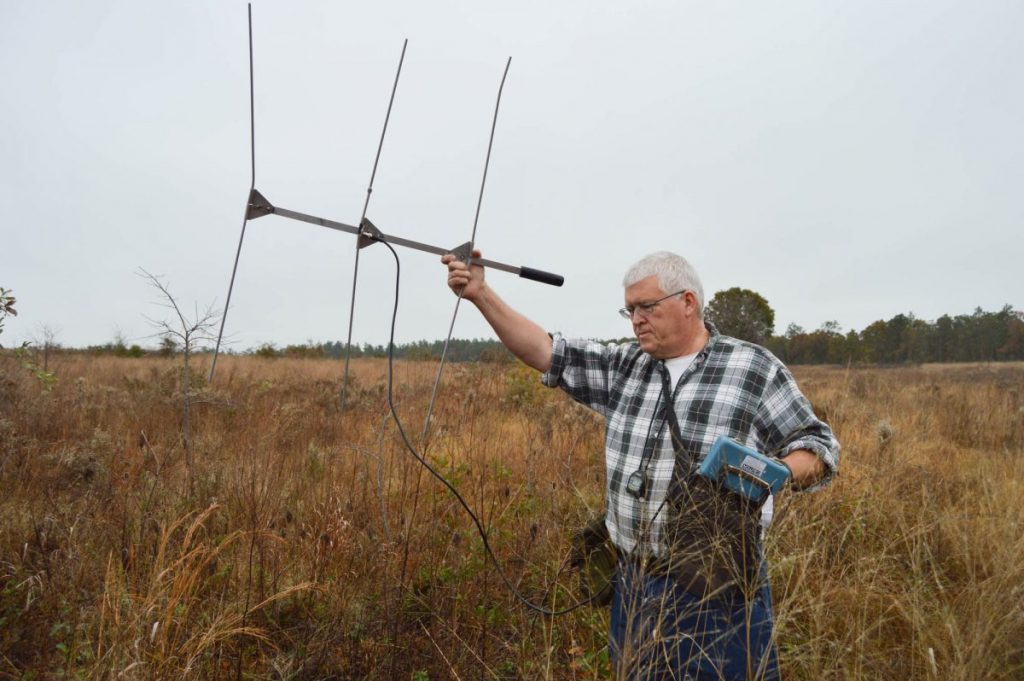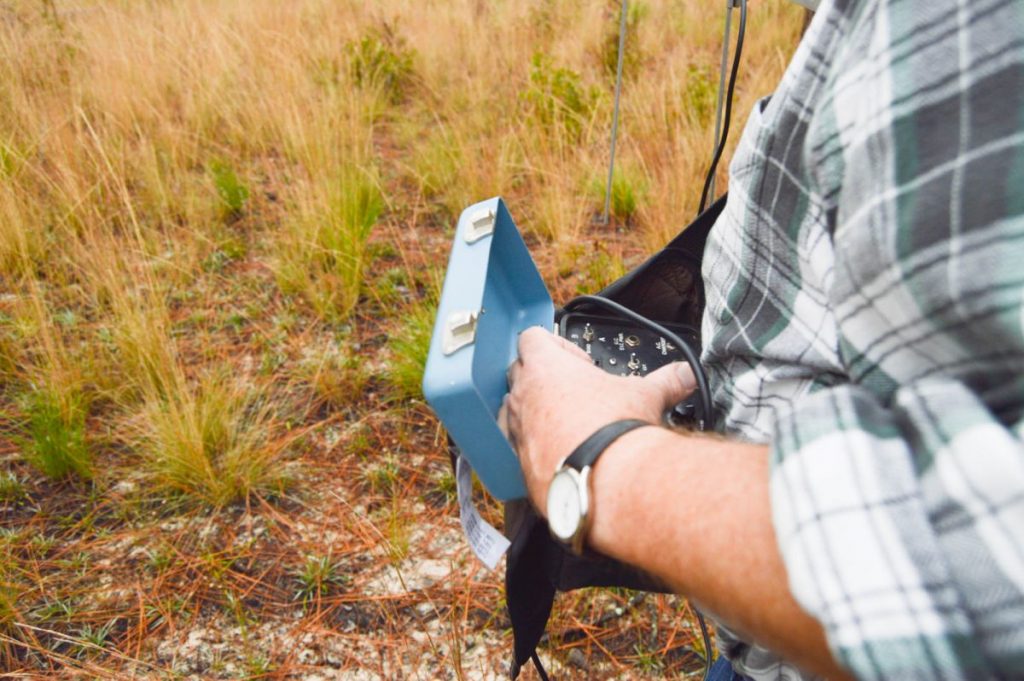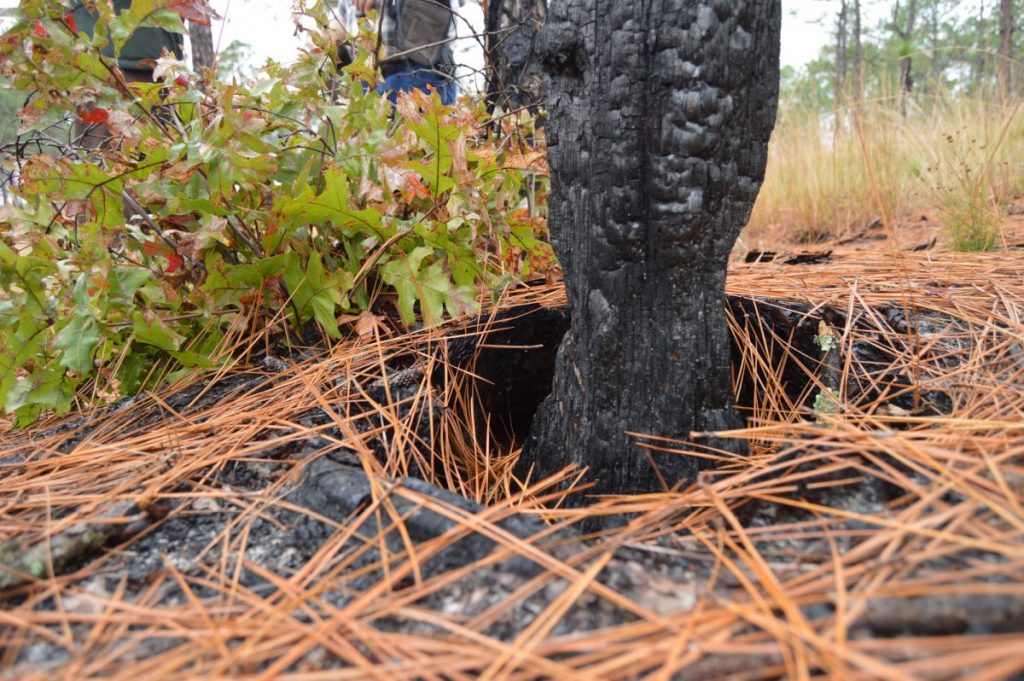By Megan Cain
There’s a mysterious predator in the southern part of North Carolina. They’re scattered from southern New Jersey to Alabama, but you rarely see them because they live underground. One scientist has found his way into their world.
Megan Cain followed him into the woods.

Jeff Beane is on a mission.
“So I know she’s out there somewhere,” Beane said.
Beane is a herpetologist with the North Carolina Museum of Natural Sciences.
He’s using radio waves to track an elusive pine snake.
Trekking through a forest near Laurinburg, he holds a lunch box-sized receiver. He’s trying to pick up the signal from a tracker that a veterinarian implanted inside the snake.
“You can point this antennae – if you point it that way, it’s a lot louder, so I know the snake’s in that direction,” Beane said.

Beane’s been tracking snakes through these woods for almost 20 years. Several times a month, he comes out to see where they are. For the last six years, he’s been following this one, a female named Maggie.
“Yeah, I try not to get attached to them. I try to think of them as research subjects. But they’re really more like friends, at least from my point of view. Not from theirs. They don’t care a thing about me and would rather never see me ever again,” Beane said.
But Beane and other scientists care a lot about these snakes. By tracking the reptiles’ movements, Beane gets a unique insight into what the animals need in their environments.
It turns out that these snakes are creatures of habit. They have favorite tree stumps and holes they like to visit again and again.
When something interrupts their routine – like the placement of a road in the middle of their territory – it could be catastrophic.
“Automobiles are a big threat to a lot of things out here. Even on these sand roads they get run over. It’s all things people are doing. It’s all people. People are the problem,” Beane said.
And when things change for these snakes, they can change for the whole ecosystem.
Only three percent of the long leaf pine ecosystem where these snakes live is left. Most of the rest has been developed. Jeff Hall works with the North Carolina Wildlife Resources Commission, making decisions about how to best preserve the land for these snakes.
“None of these things, none of these species operate in exclusivity. They’re connected with one another, and we don’t always know exactly what those connections are. Some people talk about it like a car, you know, how many parts can you take off a car and the car still runs?” Hall said.

On this tracking mission, Hall and Beane spend four hours combing through briars, crunching through tall grass, and plodding through sandy soil – slowly getting closer to Maggie the Pine Snake.
“I think this part is pretty exciting because you never know exactly what you’re going to find when you get to where the snake is,” Hall said.
Maggie doesn’t make it easy. When they finally find her, she and another snake are coiled underneath a burnt stump.
“She and the Coachwhip were both in here on September 30. You’d never know there was a snake there,” Beane said.
“No, you wouldn’t,” Hall said.

We can’t see them, but the receiver betrays their hiding spot. Maggie seems to have made her home underground for the winter. Beane will keep tracking her though, just to make sure things don’t change.
“This way, I’m spying on them and I know where they’re going. And they probably wonder how I keep finding them,” Beane said.
Unless there’s a warm spell, Maggie will reemerge in early March. And she can count on Beane being right behind her when she does.

Be the first to comment